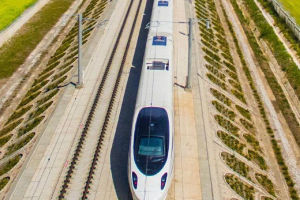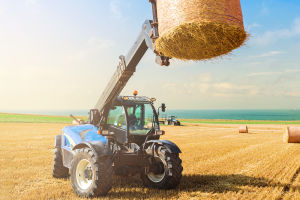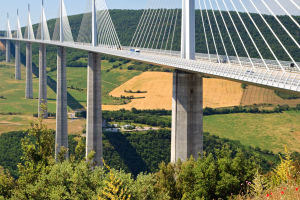
Full Speed Ahead

A train is a general term that refers to a group of railroad vehicles traveling on tracks, usually consisting of multiple cars.
This collective term encompasses various types of trains, such as railroad trains, steam locomotives, internal combustion locomotives, and subway trains.
While high-speed trains and trains both serve as means of transportation, high-speed rail can achieve speeds of up to 350 kilometers per hour, whereas traditional trains are often perceived as slower.
Despite both running on tracks, the significant difference in speed raises the question of why trains are comparatively slower.
To enhance the understanding, it is essential to explore the concept of high-speed rail. This term pertains to a railroad system designed with high standards to ensure the safety of trains traveling at high speeds. Unlike traditional trains, high-speed rail is not confined solely to tracks but encompasses a broader system.
Related
 The next generation of construction materials might come from the sands of the desert.
The next generation of construction materials might come from the sands of the desert.
 High-speed rail is one of the safest forms of transportation, and this has to do with several things.
High-speed rail is one of the safest forms of transportation, and this has to do with several things.
 In today's technologically advanced world, crops are harvested much differently than in the past.
In today's technologically advanced world, crops are harvested much differently than in the past.
 Quartz crystals: Earth's timekeepers shaping modern connectivity.
Quartz crystals: Earth's timekeepers shaping modern connectivity.
 Bridge engineering reflects a journey of theoretical advancements and the transformative power of infrastructure on society.
Bridge engineering reflects a journey of theoretical advancements and the transformative power of infrastructure on society.
 Oceans: Lifeline for Earth's Future—Celebrate, Protect, Sustain.
Oceans: Lifeline for Earth's Future—Celebrate, Protect, Sustain.
Various countries have different standards for defining high-speed rail, typically with a speed criterion of 200 kilometers per hour or less for conventional railroads.

The difference in speed between high-speed rail and trains is not solely attributed to different train models; the type of railroad plays a crucial role as well.
While both high-speed trains and traditional trains travel on tracks, the construction of the tracks differs significantly. High-speed trains employ seamless steel rails to maintain stability, resulting in minimal vibrations during travel.
In contrast, ordinary tracks have gaps at regular intervals, preventing track deformation due to thermal expansion and contraction. Replacing traditional tracks with seamless steel tracks would incur substantial costs, limiting the speed potential of conventional trains.
Additionally, safety considerations contribute to the speed disparity. High-speed railroads often operate in closed lanes to prevent accidents, especially given their high speeds.
High-speed railroads are commonly laid on viaducts to deter intrusions by pedestrians or animals. Traditional railroads, due to lower train speeds and audible noise, typically do not require closed sections, thus minimizing the need for additional safety measures and associated costs.
The choice between high-speed rail and traditional trains also depends on their intended use. High-speed rail is well-suited for passenger transportation systems, offering speed and comfort. On the other hand, traditional trains, with their lower construction and operational costs, coupled with a robust carrying capacity, are more suitable for freight transportation systems.
The disparity in speed between high-speed rail and traditional trains stems from various factors, including track construction, safety considerations, and intended usage.
Understanding these distinctions provides valuable insights into the diverse roles these transportation systems play in different contexts.